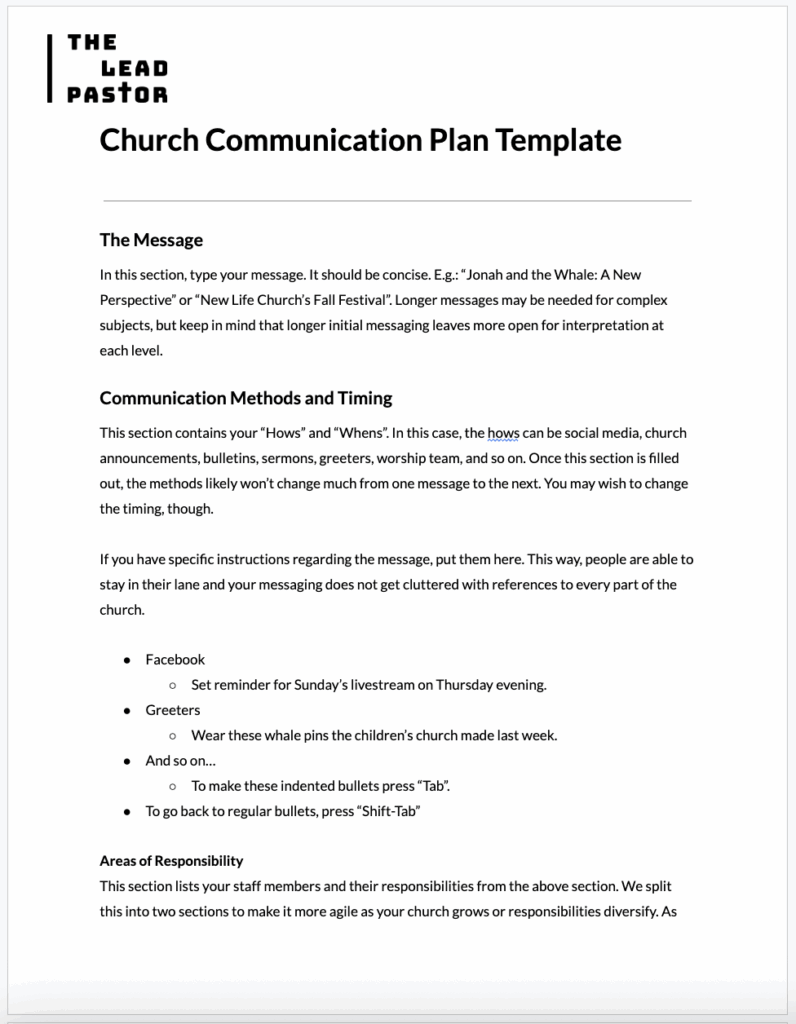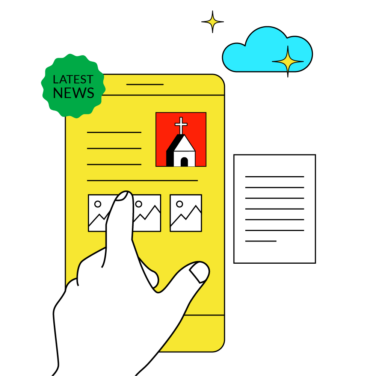Define your core message clearly: Ensure everyone understands the main point without confusion.
Select appropriate communication channels: Choose the platforms where your members already ARE in order to reach your church members effectively.
Establish a consistent communication schedule: Regular updates help maintain engagement and awareness.
Assign clear roles and responsibilities: Clarify who does what to streamline the communication process.
If you're leading a mid-sized church and searching for a clear, no-fuss church communication plan template, you're in good company. Many pastors I know—and I've been there myself—find communication gets tangled without a plan that everyone understands.
- You spend too much time repeating the same announcements across different platforms.
- Your team often misses deadlines or forgets who’s doing what.
- Congregants stay out of the loop, or worse, feel like they’re always the last to know.
These kinds of issues crop up because the communication process is often informal or assumed. Without a shared roadmap, even the most capable team can struggle to stay aligned.
FIRST: without the most effective church management software tool at your disposal, your communication efforts WILL struggle to gain traction. Make sure you and your leadership teams are in good shape for this.
With that sorted, we'll tackle the following:
- What Is A Church Communication Plan?
- Download Our Church Communication Plan Template
- How To Use The Church Communication Plan Template
What Is A Church Communication Plan?
A church communication plan is, simply, a document that details how an idea is translated from the lead pastor’s notes to the congregation’s eyes and ears. As always, smaller churches will have some roles overlap, while larger churches might have separate people.
So, if your Treasurer also prints the church bulletins and church connection cards (using templates), or your deacons are also your greeters (or however your church is structured), use this template, not just as a worksheet but as a living document to suit your church.
The information contained in the church communication plan is the message, how and when the message will be delivered, and who will be delivering it. The message should be self-explanatory. It is your sermon, a church event, or any other information your church staff or members need to know.
- “How” entails a list of all the ways that the information can be delivered to the church members and community. This includes social media posts, sermon podcasts, follow-up ministry, and any other communication channels that help you reach your target audience.
- “When” is where your church communications strategy comes in. Do you preview next week’s sermon in this week’s bulletin? How many weeks in advance do you advertise your Trunk-Or-Treat? Do you post upcoming sermon titles on your website or Facebook page? These questions will inform the specific timing of each part of your message. Each “how” must be accompanied by a “when”.
- “Who” will usually be self-explanatory as well. The lead pastor usually preaches, unless a guest speaker is invited. The worship leader picks out the right songs and music to accompany the message. The printing team assembles the bulletin to enhance the message. You might even have your greeters incorporate a themed greeting (but try not to be cheesy!).
Overall, you will be able to fill-in the blanks on your church communication plan template, and everyone in your church leadership team will know what to do and when to do it.
Download: Church Communication Template
This church communication plan template can help pastors avoid confusion, streamline church-wide comms, and align their ministry team easily. Consider using church bulletin templates to further enhance your communication efforts.

With this, you and your church leaders will be on your way to effective communication.
Using the Template:
The template itself contains instructions, but I will fill out a little more detail here to empower your communications plan.
First, the messaging section tells you to keep your message concise to avoid different avenues of interpretation. For instance, if you write too much in the messaging section about having a different perspective on Jonah, someone might be able to deduce that you’re going to preach about what the whale is thinking.
Messaging works best when confined to single sentences. Your most complex subjects should take no more than three.
In the second section, what I called the “Hows” and “Whens” are more professionally called the methods and timing of communication. In addition to the examples given in the template, look around your church and find the things that communicate to your members.
One example of this is your lobby area. I know you consider the lobby part of your communication strategy—what church doesn’t communicate their love of Christmas during the holiday season by decorating the lobby? The way you dress your altar, your lighting choices, and many more things all impact your message.
Most importantly, proper timing is the difference maker in good communication. Give your events time to breathe. Let the word-of-mouth develop over weeks and months for larger, yearly events. If you are excited about a sermon that is coming up, let the people know, so they can be excited, too. A ministry that knows timing knows growth, particularly when unified team communication is prioritized.
Rounding Up: Church Communication Plan Template
Don’t be afraid to change your template as often as your church changes. Practice using it every time you need to say something to a number of people. From your first time and every day after, you will grow as a leader and a communicator the more you do.
Read more about church communication here, and learn how church communication software can streamline this process within your church.
Join The Lead Pastor Newsletter
Want more simple tools like this? Join my free newsletter for pastors—I share real-life solutions, templates, and tips every few weeks to help you lead your church with clarity and confidence.


